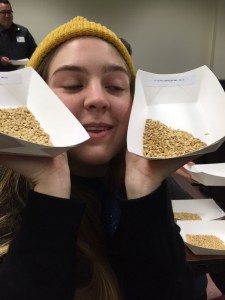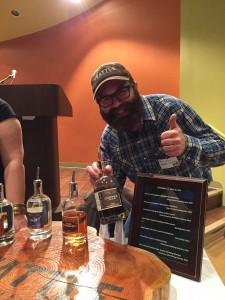Learning about local sources of ingredients. Expanding our knowledge of locally foraged foods. Because most of us are new to the pacific northwest we want to learn more about the flavors of Washington and how to accentuate them through cooking. Gaining an understanding of the value of locally sourced food and its ties to emotional terroir. Ultimately honoring the Washingtonian ingredients around us to develop flavors that personify the area we live in.
Communicating with farmers, going to farmers markets, attending the cascade grains conference. Reading about and practicing foraging. Reading about and watching documentaries about chefs and restaurants doing similar things. Documenting where we find ingredients and what we make with them.
We will document this process and what we learn on a blogsite with photography, a short video essay, and written work. The written work will include recipes. We will note in our recipes where we got the ingredients from. We will also do a write up with each recipe tying it to relevent science, history, cultural studies, and terroir we find in our research.
To develop cooking skills, including time management, planning, and speed, as well as seasoning. To learn basic kitchen food safety practices. How to use ingredients to reflect our community and environment.
Planning and preparing menus around local seasonal ingredients. Cooking with an audience and a deadline in mind. Cleaning afterwards. We will relate our recipes to Barb Stuckey’s Taste What Your Missing. Those of us that don’t have a food handlers card already will take the test and get a card. We will be using a few different books and cookbooks including (not limited to): On Food and Cooking (McGee), The Food Lab (Lopez), Heritage (Brock), The professional Chef 8th ed. (CIA).
We will show these objectives and activities through the same blogsite and write-ups discussed above. In addition members of the class and faculty will have some opportunities to taste our cooking. They can also all try our recipes at home!
To learn media and video recording skills and Photography and narrative writing too.
Documenting the project with some video, lots of pictures, written work, and putting this all on our blogsite. This media studies component overlaps with the above Stuckey style write up that will accompany our recipes with each meal. Watching food documentaries and cooking shows.
We will document this process and what we learn on a blogsite with photography, a short video essay, a log of our hours worked, a short written narrative reflection, and a final presentation to the class.
Learning how to cook exciting good food using seasonal local ingredients in winter and how to share this with others.
Developing recipes with the ingredients we source. Tasting and adjusting these recipes and finally sharing them with people outside the group before posting the recipes to our site. We will also read our recipe and science books and watch video documentaries about food and cooking.
In summary our sponsor will see our blogsite which will include a video essay, photography, write-ups of our recipes including the sources of ingredients, and write-ups about our food through multiple perspectives based on our reading list. Finally our sponsor will see our final presentation.


Leave a Reply